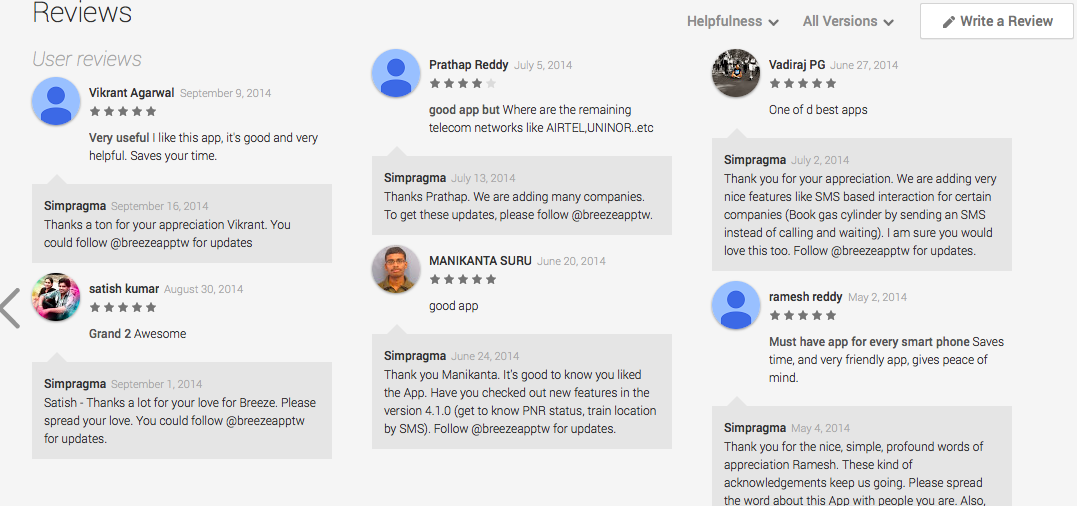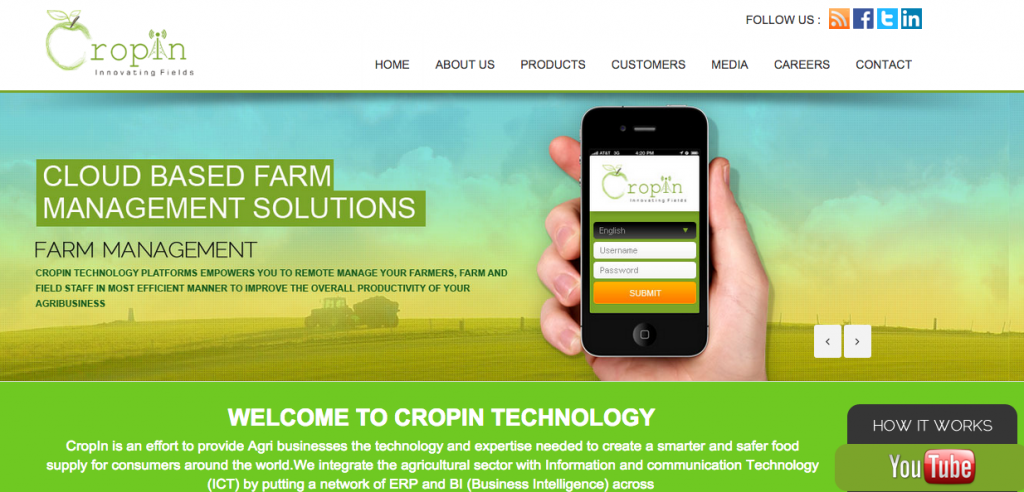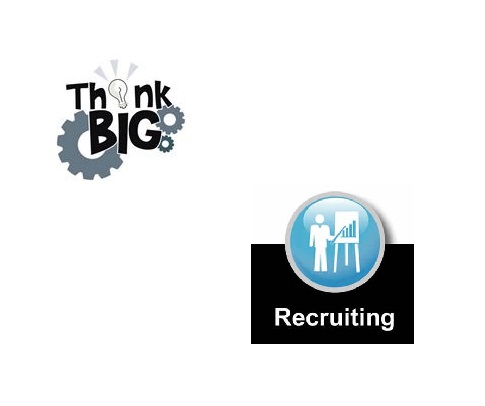Are you tired of listening to long voice (IVR) menus and repeatedly entering the same options every time you call your customer care, Breeze might be the solution you are looking for. Breeze allows you to “browse” the IVR of 100+ companies across 20+ categories without even calling and upon choosing to call an IVR option, the app will dial all the intermediate IVR options for the user.
The app also allows users to ‘bookmark’ their most frequently used IVR options for any company. It also remembers the most recently called IVR option (just like the way a mobile phone remembers phone calls) and this facility can be used to call the same IVR option in a single step.
Earlier this month, I had a telephonic chat with Manjunath Hanasi, co-founder of Breeze on the story behind Breeze, their current customers and future roadmap.
Could you give our readers some background about Breeze and how you started the venture.
People say “necessity is the mother of all inventions”. So is the story about Breeze.
My washing machine, IFB Senorita Plus, that was working flawlessly for almost 6 years broke down suddenly as if it had a major heart attack. I wanted to call IFB service center immediately, however I didn’t have their number handy. I searched the Internet for their number and called them up. My call went to IVR as usual and I listened patiently and intently to the their options and chose the correct one. Finally after choosing 2 IVR options, I got connected to the operator. I spoke to the person who was very courteous and I thought my washing machine will be repaired quickly. However, due to some communication problem between IFB and local service center, I had to call IFB service center for almost 10 times within a span of 2 weeks. Every time, I called them up I was getting irritated by the IVR interaction.
At the same time, my Sony Bravia TV, started showing aging issues. Again I didn’t have their number handy, searched again and called them up. However, this time the IVR was even more horrible. I had to listen to IVR for eternity before I arrived at the right option i.e. Bravia TV related issues. I had to call Sony 3 to 4 times before my TV got repaired. I was hating IVR interaction by that time.
After the above incidents, I started thinking there must be a better way to connect with companies. I discussed this among my friends and colleagues. Out of these discussions, came out “Breeze”, a mobile App to easily connect to companies
Please tell us a bit about what your product does and the response that you have got from your users.
Our product “Breeze” presents the IVR in a visual, browsable fashion. People can traverse the IVR menu visually rather than listening to and dialing an option. In this way, you don’t have to listen intently to the IVR menus. This saves 60-70% of time and money while you connect to your desired option.
Breeze allows users to bookmark their frequently used IVR options and gives quick access to the recent IVR options they called (just like phone contacts). In this way, people can reach their desired options in “one touch”. This is a huge time and frustration saver.
Breeze also displays whether the number is toll-free or charged. Additionally, it also shows the working times of the IVR.
In addition to connecting to IVR, Breeze also supports SMS, web and API connectivity to the companies.
Few screenshots of the product. Breeze has companies across 20+ Categories
User response has been tremendous to say the least. We have got some really wonderful users and they love the App. Here are some of the comments from the Google play store.
Are you also partnering with these companies or do you intend to them in the future? Do you provide any analytics to the companies?
We intend to partner with companies in the future. With partnership and deep integration with the companies, we can take user experience to a grand new level.
By partnering with us, companies can greatly benefit in areas like customer experience, call costs per customer, customer feedback and revenue generation through offers.
Analytics is one of major offerings for the companies. Since we provide last-mile connectivity for the customer care experience, we are able to provide feedback that can’t be acquired by any other means.
We provide analytics about the user experience and feedback, location based analytics and anonymous competitive analytics.
Breeze also supports companies to show non-intrusive offers in their company menu. We provide analytics about the view and clicks.
Can you tell us your user acquisition strategy?
Initially, we were acquiring users in an organic manner with word-of-mouth. We used Facebook to spread the word among our friends. Later, we have used channels like public-relations, speaking and demonstrating in conferences, online startup websites, app bloggers and customer service forums.
Going ahead, we want to tap content marketing and social media channels even more.
What kind of business model you have in mind?
Breeze is “free for users and freemium for companies”.
We list companies on Breeze without any charges. We charge companies based on premium features like showing offers, notifications to users, analytics and customization/white labelling.
What kind of results are your customers able to see after using your product?
Users are enjoying the product. They are able to cut down on time and money while connecting to companies. One behaviour I saw from the users surprised me “lot ot people are browsing the companies to see what’s there in the IVR”. Would you ever do this by calling up companies IVR? Never.
Customers (Companies) are able to see feedback for all the customer care interactions, cost optimization and improvement in customer experience.
How does the roadmap for Breeze look like in the next few months?
We are adding many more companies to the platform in categories like telecom, banking and insurance. Additionally we are working on an integration platform to simplify integration with companies.
We have launched Breeze Android App for few months now. Our iOS version is getting ready.
We are building self-service portal for companies. Using this portal, companies would be able to push offers, and see feedback and analytics in real time.
We are also working with cloud IVR providers to integrate their IVR platform with Breeze.
What are some of your biggest challenges?
Keeping up with IVR changes and ensuring that the IVR is up-to-date has been the biggest challenge. This would be minimized to great extent once we start having deep integration with the companies.
Apart from that, since Breeze platform is essentially an enterprise product, sales process on the customer side (companies) usually takes long time. Meeting the appropriate person, keeping in touch and following up during this time is a big challenge.




 You started your career with an MNC company. What prompted you to start Cropin? Did your work experience help you after you set up Cropin?
You started your career with an MNC company. What prompted you to start Cropin? Did your work experience help you after you set up Cropin? A good balance of both factors is required. If the scarcity is already being addressed, there may not be any need for a new solution. If the surplus is already monetized, it may be difficult for the producer to engage with more means of monetizing the surplus.
A good balance of both factors is required. If the scarcity is already being addressed, there may not be any need for a new solution. If the surplus is already monetized, it may be difficult for the producer to engage with more means of monetizing the surplus.
 Online collaboration is a method that gives the ease of access to work together with your team online simultaneously. Over the last few years, online collaboration has got a few adjustments done and all we can say, yes, it is better than ever. The World Wide Web has exploded with information, there are new ideas created, implemented, and trashed every day. Restricting yourself to one idea at one location is not doing justice to the race of technology. This is where online collaboration tool comes into play. If you have the right tools, using the technology to your advantage becomes even easier. Co-founded by BITS Pilani alumni
Online collaboration is a method that gives the ease of access to work together with your team online simultaneously. Over the last few years, online collaboration has got a few adjustments done and all we can say, yes, it is better than ever. The World Wide Web has exploded with information, there are new ideas created, implemented, and trashed every day. Restricting yourself to one idea at one location is not doing justice to the race of technology. This is where online collaboration tool comes into play. If you have the right tools, using the technology to your advantage becomes even easier. Co-founded by BITS Pilani alumni  Frambench is currently focused on expanding their paid user base and making it popular amongst lawyers, architects, consultants and other professional groups with attractive pricing structure and options. This they believe can be achieved via strategic partnership with various large players across the globe. The team is also exploring series of fund raising with well-known venture capitalists in India and the United States.
Frambench is currently focused on expanding their paid user base and making it popular amongst lawyers, architects, consultants and other professional groups with attractive pricing structure and options. This they believe can be achieved via strategic partnership with various large players across the globe. The team is also exploring series of fund raising with well-known venture capitalists in India and the United States.





